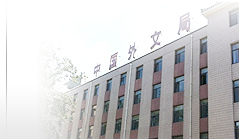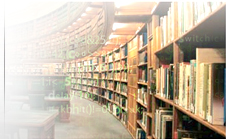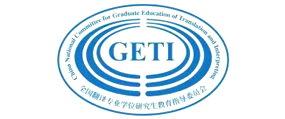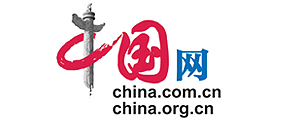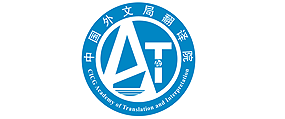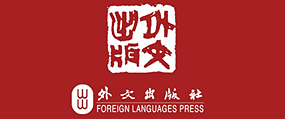05 探索翻译空间 孙艺风
19 构建以构成要素为基底的翻译研究学科构架 朱健平
政治文献翻译与国际传播专题论坛 /
31 浅谈《毛泽东选集》非通用语种的翻译出版工作 赵常谦
36 高标准翻译出版领导人著作——以英文版《习近平谈治国理政》为例 王明杰
42 作为一项系统工程的党政文献对外翻译——以党的十九大文件外译工作为例 卿学民
45 多渠道多方位对外传播党政文献 徐明强
49 白皮书的翻译与出版 李洋
译史纵横 /
54 儒莲法译《道德经》的经典生成路径及呈现 路斯琪 高方
62 林纾与陶铸军国民——以林译《黑太子南征录》为例 李震
译介研究 /
70 马悦然与中国文学在海外的译介和经典化 覃江华
翻译教学 /
79 中国翻译学科与翻译专业发展研究(1949-2019) 仲伟合 赵田园
87 我国翻译硕士专业学位现状与问题——基于《翻译硕士专业学位发展报告》的分析研究 穆雷
书刊评介 /
97 面向新问题的翻译理论构建——《翻译的(生物)符号学理论:社会文化现实的突现》述评 赵巍
学术访谈 /
103 翻译研究的哲学思考、研究范式与批评话语——廖七一教授访谈录 彭红艳
译家研究 /
111 刘宓庆译学思想的哲学之“源”探析 张思永
行业研究 /
122 会议口译百年:回顾与展望 许文胜 程璐璐
翻译评论 /
130 新巧别致的《诗经》译本——海伦·沃德尔的《中国抒情诗》述评 雷鸣
139 译底与译心
——从《朱门》行香子词的回译看中国经典的回归 栾雪梅 卞建华
学术争鸣 /
145 《富国策》译者及翻译模式重考——兼与张登德等先生商榷 刘晓峰
实践探索 /
151 “政治等效+”框架下中国特色外交隐喻翻译策略研究 杨明星 赵玉倩
160 从求实中创作 于达意处传情——第31届韩素音国际翻译大赛法汉语对翻译评析 王吉会 王钰花 傅荣
167 文学翻译的契合观——第31届韩素音国际翻译大赛西汉语对翻译评析 刘建
自学之友 /
173 Globalization in Contemporary Social Theory (Excerpt) (William E. Scheuerman) 周领顺 顾成豪 译
177 书面语体文本语气的翻译再现 周领顺
181 等待(叶子南) 蔡力坚 译
185 什么是忠实性 蔡力坚
189 英文摘要
192 第三十二届韩素音国际翻译大赛竞赛规则
词语选译 十九届四中全会《决定》重要语汇英文参考译法
本期部分文章中文摘要
理论研究探索翻译空间
孙艺风 澳门大学
孙艺风 澳门大学
摘要:本文探讨翻译研究框架下的空间概念,确切来说是多重空间(spaces)的概念。翻译发生在两种语言之间的空间里,但也源于不同空间,并在不同的空间运作。翻译需要从一处移动到另一处,在此过程中空间的创造/生产使得多种表现方式成为可能。所以,空间概念需要加以扩展定义,以便使其更好地发挥理论作用。本文所讨论的(多重)空间概念不仅是弥合不同的语言和文化之间鸿沟或距离的桥梁,更是一种切实的策略,以了解和理清翻译的运作机制。我们有时需要把焦点从过程层面转移至空间层面,探讨在准确性和可接受性的两个极点间游移的不同幅度,以尝试从不同的角度来协调和提升在语言维度和风格维度上的有效性传递。翻译研究中准确性和可接受性的矛盾,需要一系列空间来满足复杂多变的协商调停的需求。翻译本身即是在不可通约性、多义性和意义与生俱来的不可简约性之间反复调停。考虑到翻译中语义的不确定和审美的飘忽,译者需要跨越多个空间、涉及多种文化规范和传统。民族、社会、文化、历史、审美等空间相互联结;只有加深对翻译中这些空间各式各样形态的思考,翻译文本才可能实现合理平衡,并保持连贯一致。
关键词:翻译;距离;(多重)空间;语境;阐释
构建以构成要素为基底的翻译研究学科构架
朱健平 湖南大学
朱健平 湖南大学
摘要:20世纪六七十年代以来,翻译学者构建了多个翻译研究学科构架,对翻译研究的独立和发展做出了重要贡献,但现有构架都还存在一定的局限,使翻译研究现阶段的发展又遇到了新的瓶颈。本文以学科构架的构成要素为基底,构建了一个以研究对象为核心,研究对象、研究类型、研究层面、研究方法和研究视野五要素互联互动的翻译研究学科新构架,以期克服现有构架的不足。
关键词:翻译研究;学科构架;构成要素;研究对象
政治文献翻译与国际传播专题论坛
编者按:新中国成立70年来,党和国家领导人著作、重大党政会议文件等重要党政文献由中联部、中国外文局、原中央编译局等单位分别组织全国精锐外语力量,翻译成近40种语言出版,发行到全球180多个国家和地区,在向世界贡献中国经验、中国智慧,帮助世界读懂中国方面发挥了不可替代的作用。以庆祝新中国成立70周年为契机,中国译协特约外文出版社在2019中国译协年会上举办“新中国70年党政文献翻译与国际传播”专题论坛,以《习近平谈治国理政》、《毛泽东选集》、党的十九大文件、政府白皮书等为案例,深入介绍了党政文献翻译的组织管理、翻译策略和国际传播。本论坛刊登的五篇文章依据年会专题论坛发言整理而成。
译史纵横
儒莲法译《道德经》的经典生成路径及呈现
路斯琪 高方 南京大学
路斯琪 高方 南京大学
摘要:翻译内在的生成性赋予译本以生命活力。随着时代环境的变迁,翻译文本同文学文本一样经历多重复杂因素的考验,并在文本竞争与历史抉择的共同作用下被纳入优胜劣汰的进程中。生存下来的译本生命获得延续,经典也在此中得以建构。本文以法国汉学家斯塔尼斯拉斯·儒莲翻译的《道德经》为例,从经典化和经典性两个层面着手考察翻译经典的生成路径,分析历史语境及译者的翻译动机和翻译策略对译本命运产生的影响,探寻译本生命的蕴意,以辩证思考此中的利弊得失。
关键词:儒莲;《道德经》;译本生命;经典化;经典性
译介研究
马悦然与中国文学在海外的译介和经典化
覃江华 浙江大学 / 华中农业大学
摘要:马悦然是中国文学海外译介和经典化的赞助人。通过翻译,他引领瑞典汉学从传统走向现代,从解决知识之谜转向文化相互渗透;并推动中国文学从封闭走向开放,从民族文学走向世界文学。美学价值是他翻译选材的首要标准,但意识形态和权力关系的影响也非常明显。除翻译外,学术研究、课程教学、文学评论都是其推广中国文学,将个人经典变为官方经典的重要方式。参与诺贝尔文学奖评选,则是其推动中国文学译介和经典化的独特方式,在给他带来极大文化资本和象征资本的同时,也影响到其翻译选材、翻译策略、翻译批评标准和翻译伦理观念。覃江华 浙江大学 / 华中农业大学
关键词:马悦然;中国文学译介;经典建构;文化相互渗透;诺贝尔文学奖
翻译教学
中国翻译学科与翻译专业发展研究(1949-2019)
仲伟合 澳门城市大学/广东科技学院 | 赵田园 广东外语外贸大学
仲伟合 澳门城市大学/广东科技学院 | 赵田园 广东外语外贸大学
摘要:本文从历时的角度描写我国翻译学科、翻译专业70年发展的轨迹,系统总结中国翻译学科和翻译专业在各时期所取得的重要成就及呈现的发展特征,阐述70年来中国翻译学科和翻译专业经历的从语言学习到语言服务为代表的七大变革,并结合新时代赋予的学科使命,展望翻译学科和翻译专业的发展图景。
关键词:翻译学科;翻译专业;发展变革;发展路径;语言学习;语言服务
书刊评介
面向新问题的翻译理论构建
——《翻译的(生物)符号学理论:社会文化现实的突现》述评
赵巍 山东大学(威海)
——《翻译的(生物)符号学理论:社会文化现实的突现》述评
赵巍 山东大学(威海)
摘要:《翻译的(生物)符号学理论:社会文化现实的突现》首次提出了一种系统的(生物)符号学翻译理论,该理论将翻译理解为负熵符号学过程,即通过对符号的意义生成过程进行制约来创造意义。(生物)符号学翻译理论能够解释生物世界中所有作为过程的符号学现象,特别是数字时代的多模态文本和多媒体文本的翻译,以及各种社会文化现实的突现。该理论学术视野宏阔,意在打通符号学、生物学、哲学和语言学,不仅打破了翻译研究长久以来的人类中心主义传统,更是突破了翻译研究长久以来的语言中心论,为分析生物世界中所有符号学现象提供了完整理论框架和概念工具。
关键词:多模态;皮尔斯现象学;皮尔斯符号学;过程-现象;负熵符号学过程
学术访谈
翻译研究的哲学思考、研究范式与批评话语
——廖七一教授访谈录
彭红艳 四川外国语大学
——廖七一教授访谈录
彭红艳 四川外国语大学
摘要:四川外国语大学廖七一教授是国内翻译研究的知名学者。他主持编写的《当代西方翻译理论探索》(2000)、《当代英国翻译理论》(2001)、《西方翻译理论原典选读》(2009)对国内的翻译学科建设和研究生培养产生了积极而重要的影响。他撰写的《胡适诗歌翻译研究》(2006)、《中国近代翻译思想的嬗变——五四前后文学翻译规范研究》(2010)、《抗战时期重庆翻译研究》(2015)等著述在翻译史研究领域享有盛誉。笔者就翻译研究的哲学思考、研究范式、理论建构、批评话语、治学方法等问题对廖七一教授进行了深度访谈,以期对当下翻译研究的发展与创新有所启示。
关键词:廖七一;翻译研究;研究范式;批评话语
译家研究
刘宓庆译学思想的哲学之“源”探析
张思永 天津职业技术师范大学
摘要:翻译学具有天生的跨学科性,来自他学科的理论之“源”有层次之分,而最高层次的“源”就是哲学之“源”, 即现代翻译学的发展离不开哲学之“源”的观照。分清“源”和“流”,这是中国当代翻译理论家刘宓庆在译学研究中坚持和践行的一个基本原则。文章分析了刘宓庆译学思想的中西哲学之“源”,旨在探究其译学思想形成的哲学心路历程,并望对中国当前的译学研究有所启示。张思永 天津职业技术师范大学
关键词:刘宓庆;译学思想;哲学之“源”
行业研究
会议口译百年:回顾与展望
许文胜 同济大学 | 程璐璐 黑龙江大学/佳木斯大学
许文胜 同济大学 | 程璐璐 黑龙江大学/佳木斯大学
摘要:巴黎和会确立了口译职业化的开端,会议口译至今已走过百年。伴随技术文明与人类智慧的有机融合,传统会议口译的工作模式正进行着前所未有的重构,这也是该行业可超越时空的界限、呈现多模态发展的力证。为迎接现代语言服务产业的更新与转向,有必要回顾国内外该领域发展,以期对推动整个行业健康、可持续发展提供借鉴。
关键词:会议口译;百年历史;职业化;展望
翻译评论
新巧别致的《诗经》译本
——海伦·沃德尔的《中国抒情诗》述评
雷鸣 北京大学
——海伦·沃德尔的《中国抒情诗》述评
雷鸣 北京大学
摘要:本文以海伦·沃德尔的《诗经》节译本《中国抒情诗》为研究对象,文章第一部分以人物传记和信件为依据,介绍了沃德尔译诗始末;第二部分从正文和副文本两个角度,从整体上介绍这本译诗集,并试图还原每首译诗所对应的《诗经》原篇;第三部分以部分译诗为例,分析了沃德尔译诗对时间的敏感与重视、注重诗节意义的递进关系、独特意象的再创造和“归化”的尝试等几个特点。
关键词:海伦·沃德尔;《中国抒情诗》;《诗经》;创造性翻译
译底与译心
——从《朱门》行香子词的回译看中国经典的回归
栾雪梅 中国海洋大学 | 卞建华 青岛大学
——从《朱门》行香子词的回译看中国经典的回归
栾雪梅 中国海洋大学 | 卞建华 青岛大学
摘要:回译就是以“译面”为线索寻找和确定“译底”的过程。但在翻译实践中常常出现同一个“译面”对应多个“译心”的情况。本文以林语堂英文小说The Vermilion Gate(《朱门》)中行香子词的回译为切入点,剖析现有汉译本出现不同“译心”的原因,提出中国经典文本的回译应充分利用语境,从上下文获得线索,同时根据译面中出现的关键词语和信息,仔细查找文献,直达“译底”,实现经典文献的回归。
关键词:林语堂;《朱门》;行香子;《金瓶梅词话》;译底与译心
学术争鸣
《富国策》译者及翻译模式重考
——兼与张登德等先生商榷
刘晓峰 西安外国语大学
——兼与张登德等先生商榷
刘晓峰 西安外国语大学
摘要:考证译者和翻译模式有重要的翻译文化史学意义。《安徽史学》2006年第6期刊登了张登德的“《富国策》著译者考
释”,张文对《富国策》的译者及其翻译模式进行了详细考证,结果响应了学界部分学者的观点,认为《富国策》译者是汪凤藻,翻译模式为独译。本文结合史学、翻译学和社会学等原理,重新考释《富国策》翻译事件,提出并论证了不同的观点,认为其译者当为丁韪良和汪凤藻两人,翻译模式是师生合译,对身为学生的汪凤藻来说是完成翻译任务,而对身为京师同文馆总教习的丁韪良来说,更多的是一种策略。
关键词:《富国策》;译者和翻译模式;重考;社会翻译学视角
实践探索
“政治等效+”框架下中国特色外交隐喻翻译策略研究
杨明星 赵玉倩 郑州大学
杨明星 赵玉倩 郑州大学
摘要:外交隐喻是传播外交理念特有的话语方式、修辞手法和语用策略,也是中国特色大国外交话语体系内涵建设的重要组成部分。恰当、得体地翻译外交隐喻,既是外交话语翻译实践工作中亟待解决的难点问题,也是讲好中国故事、传播好中国声音的重要议题。本文拟从外交学、认知隐喻学和翻译学等跨学科的视角,结合真实经典的外交案例,系统分析外交隐喻的文本特征和话语功能。外交隐喻的特殊属性决定了对其翻译应遵循“政治等效+意象再现”(PEIR)这一复合性的翻译标准;在此标准下,不同类型的外交隐喻可采取不同的翻译策略和方法。
关键词:外交隐喻;政治等效;意象再现;翻译原则与策略
英文摘要
(摘要修订:刘亚猛)
Exploring Translation Spaces
By SUN Yifeng (University of Macau, Macao, China) p.5
Abstract: This paper intends to explore the concept of space, or rather spaces in relation to translation studies. Translation takes place in a space between two languages, but also emanates from and operates within different spaces. Translation entails movement from one site to another, in whose process the creation/production of spaces allows for multiple representations. In order to make it work better, it is necessary to adopt a broad definition of the concept of spaces. Here the concept of space(s) is understood not only as the bridging of a gap or distance between two languages and cultures but more importantly, as a tangible strategy to understand and disentangle what exactly happens when translation occurs. It is sometimes necessary to shift focus from process to space in exploring ways to negotiate and enhance the availability of linguistic and stylistic resources by addressing varying degrees of polarity between accuracy and acceptability. The perennial challenge to reconcile the conflicting demands of both needs requires a series of spaces to meet the needs of intricate negotiation and mediation that are required. Translation leads to an assemblage that mediates the recognition of incommensurability, multiplicity and, ultimately, the inherent irreducibility of meaning. Given the semantically uncertain and aesthetically precarious nature of translation, translators need to traverse varied spaces while working with multiple cultural codes and conventions. Only through a heightened awareness of the polymorphic interfaces between linked national, social, cultural, historical and aesthetic spaces, can it become possible to produce a translation version that is reasonably balanced and consistently coherent.(摘要修订:刘亚猛)
Exploring Translation Spaces
By SUN Yifeng (University of Macau, Macao, China) p.5
Keywords: translation; distance; space(s); context; interpretation
Toward a Component-based Model of Translation Studies
By ZHU Jianping(Hunan University, Changsha, China)p.19
By ZHU Jianping(Hunan University, Changsha, China)p.19
Abstract: Many models for translation studies have been proposed since the 1960s. While these have contributed significantly to the formation and development of TS, their inherent flaws seem to have led to a bottleneck currently encountered by the discipline. This paper takes the five components of research, namely, object, type, level, methodology and perspective, as the base on which to conceive and re-draw an object-centered and components-interrelating blueprint for further developing translation studies, arguing that adopting such a new approach holds the promise of overcoming the above-mentioned developmental bottleneck in TS.
Keywords: translation studies; disciplinary map; component; research object
Stanislas Julien’s Translation of Tao Te King and Its Canonization as a Translated Text
By LU Siqi & GAO Fang (Nanjing University, Nanjing, China) p.54
Abstract: Inherently generative, translation endows the translated text with a life-sustaining vitality. A translated text, as part of the target-language literature, will necessarily be involved in a competition with other texts concerned for surviving the changes in time and context. Whether a certain translated text would eventually win out, enjoy a prolonged life and even become canonized is determined by a complex of factors, including the vagaries of history’blessing. Concerning this point, celebrated French sinologist Stanislas Julien’rendition of Tao Te King is a case in point. As the study presented here reveals, the eventual canonization of this translation is the joint work of factors ranging from the relevant historical context, the translator’s motivation, and the translation strategies he has adopted.By LU Siqi & GAO Fang (Nanjing University, Nanjing, China) p.54
Keywords: Stanislas Julien; Tao Te King; life of the translated text; canonization; canonicity
Rewriting the Source Texts as a Means of Fostering a Martial People: Lin Shu as a Translator with a Political Agenda
By LI Zhen(Anhui Normal University, Wuhu, China) p.62
By LI Zhen(Anhui Normal University, Wuhu, China) p.62
Abstract: Lin Shu, the preeminent literary translator of China’s late Qing period, had a way of turning his translated novels into “substitutes for military books” for cultivating a martial character among his fellow Chinese nationals. Such an agenda of his suggests itself not just in the comments he made paratextually through the prefaces or notes added to his translations, but in his way of changing the narrative structure of the source texts. By infusing them with a martial spirit, he often forced the original stories to undergo a process of “metamorphosis”in the target texts. An especially illuminating case in this respect is Lin Shu’s translation of Conan Doyle’s The White Company, where a generic transformation took place when an English historical novel was turned into a military fiction in its Chinese version. By reshaping the image of the warriors in the original, he promoted the ideals that would have been cherished by a martial nation, including worship for martial deeds, patriotism and loyalty to the emperor. What he thus advocated captured the collective imagination of the Chinese reading public at that time.
Keywords: The White Company; Lin Shu; translation; rewriting; martial spirit
Göran Malmqvist’s Contribution to the Translation and Canonization of Chinese Literature in the West
By QIN Jianghua (Zhejiang University, Hangzhou, China/Huazhong Agricultural University, Wuhan, China) p.70
Abstract: Göran Malmqvist will be remembered both as a reformer in sinology and a patron of efforts to translate and canonize Chinese literature in the West. He initiated, via his own translations, the transition of Swedish sinology from the Karlgrenian paradigm bent on solving intellectual riddles to a new mode of practice devoted to cultural interpenetration. And he played a significant role in promoting Chinese literature globally, helping to ensure its presence and enhance its visibility in world literature. In selecting source texts for his translation, however, Göran Malmqvist could not help being swayed by the dictates of the dominant ideology and the power relations in which he was enmeshed even though he also attached much importance to aesthetic value. In addition to being a translator, he functioned as a researcher, an educator, and a reviewer as well, which made it possible for him to promote Chinese literature in many different ways and to transform it from his personal favorite to a universally recognized canon. Serving at the Nobel Committee in Literature in particular enabled him to gain an impressive amount of cultural and symbolic capitals, with which he was able to exert notable influence on the Nobel Prize selecting process and to promote his favored strategies and criteria of translation as well.By QIN Jianghua (Zhejiang University, Hangzhou, China/Huazhong Agricultural University, Wuhan, China) p.70
Keywords: Göran Malmqvist; translation; Chinese literature; canon formation; cultural interpenetration; Nobel Prize in Literature
The Philosophical Origin of Liu Mining’s Theory of Translation
By ZHANG Siyong(Tianjin University of Technology and Education, Tianjin, China) p.111
Abstract: Translation studies is by nature interdisciplinary, for it draws so heavily on resources offered by other disciplines that its own disciplinary formation could well be seen as a confluence of several other “streams.” Of these contributive “streams,” as has been argued by eminent contemporary Chinese theorist of translation Liu Miqing, philosophy is the single most important. Liu’s unique perspective on translation, with its emphasis on the need to distinguish TS’s originative “sources” from the “course” of the discipline’s later development, and its valorization of philosophy’s seminal contribution to modern studies of translation, is itself rooted in Chinese and western philosophical sources. An exploration of these sources will not only deepen our understanding of Liu’s thoughts on translation, but also provide fresh inspirations for developing Chinese TS as a whole.By ZHANG Siyong(Tianjin University of Technology and Education, Tianjin, China) p.111
Keywords: Liu Miqing; translation studies; source; course; philosophy
Helen Waddell’s Lyrics from the Chinese: A Re-reading
By LEI Ming (Peking University, Beijing, China) p.130
By LEI Ming (Peking University, Beijing, China) p.130
Abstract: This article takes another look at Helen Waddell’s creative rendition of China’s ancient collection of poetry Shi-jing in her Lyrics from the Chinese. Starting with a biography- and correspondence-enabled reconstruction of Waddell’s process of translation, the article turns its attention to both the text and the paratext of the publication, making special efforts to identifying the original odes in Shi-jing of which Waddell’s “Chinese lyrics”are partial translations. An analysis of what characterizes her translational style is also offered on the basis of a close reading of some exemplary pieces from the publication.
Keywords: Helen Waddell; Lyrics from the Chinese; Shi-jing; creative translation
Who Translated Fu Guo Ce, and in What Manner? —A Discussion with Zhang Dengde and Others
By LIU Xiaofeng(Xi’an International Studies University, Xi’an, China) p.145
By LIU Xiaofeng(Xi’an International Studies University, Xi’an, China) p.145
Abstract: Ina 2006 article published in the journal Anhui History, Professor Zhang Dengde identifies Wang Fengzao as the sole translator of Fu Guo Ce on the basis of his extensive research of how this 1880 Chinese translation of Henry Fawcett’s Manual of Political Economy was produced. While his finding has since been widely accepted by translation scholars, issues concerning Fu Guo Ce’s translatorship and mode of translation remain. Guided by the principles of historiography, translatology and sociology, this paper subjects to a critical review the different viewpoints on the circumstances under which Fawcett’s Manual was first rendered into Chinese. By taking into consideration all the relevant textual and contextual elements, the author concludes instead that Fu Guo Ce was the collaborative work by William A. P. Martin and his student Wang Fengzao. While the former provided the general guidelines for undertaking the translation, the rendition was largely done by the latter.
Keywords: Fu Guo Ce; translator; translation mode; re-examination; perspective; sociology of translation
Strategies for Translating Diplomacy-serving Metaphors with Chinese Characteristics
By YANG Mingxing & ZHAO Yuqian (Zhengzhou University, Zhengzhou, China) p.151
By YANG Mingxing & ZHAO Yuqian (Zhengzhou University, Zhengzhou, China) p.151
Abstract: The use of metaphors is an indispensable discursive mode, rhetorical device, and pragmatic strategy, and is therefore essential to the expressiveness and functionality of diplomatic discourse. How to appropriately and effectively translate metaphors employed in China’s diplomatic texts is not just a worthy academic problem to be addressed in relevant scholarly fields, but also a significant topic in the on-going discussion on what ought to be the way to tell good stories about China. This paper conducts a research on the strategies for rendering metaphors circulating in China’s diplomatic discourse from the perspectives of diplomacy, cognitive metaphor and translation studies and, on the basis of some case studies, generalizes on the unique attributes of diplomacy-serving metaphors. The study reaffirms metaphor’s rhetorical significance and practical value for diplomatic communication, and proposes that “Political Equivalence + Image Re-presentation” (PEIR) be adopted as the criterion whereby the translation of metaphors is evaluated. In addition, the paper also calls for the use of different translation strategies and methods for dealing with metaphors employed in different types of diplomatic texts.
Keywords: diplomacy-serving metaphor; Political Equivalence; Image Re-presentation; translation principle and strategy

